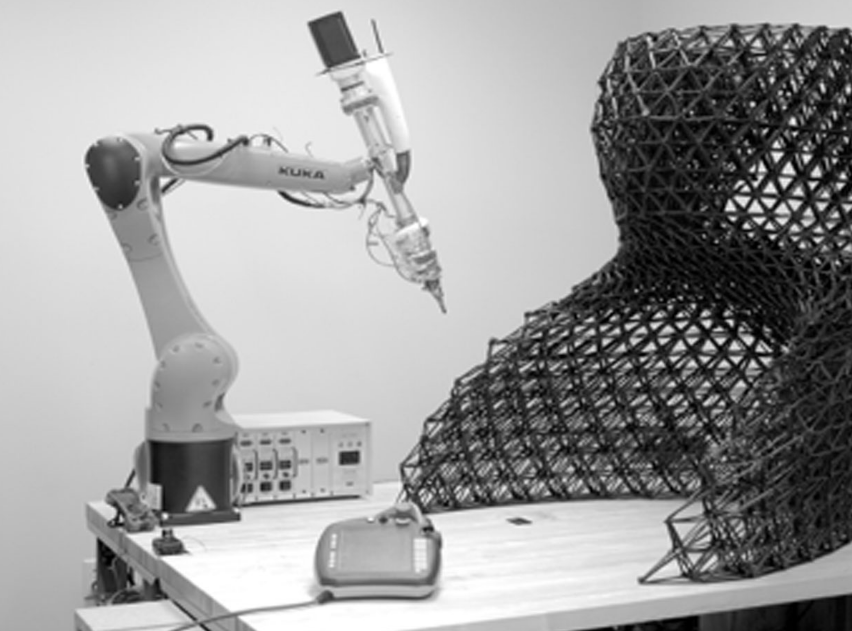Additive manufacturing or 3D printing
has been transforming many industries by driving innovation,
accelerating production, and curtailing costs. Electronics is one of the
largest global industries that leverage 3D printing technologies to
accelerate designing, production, and delivery of a wide range of
devices with advanced functionality – computers, televisions, radios,
semiconductors, antennas, sensors, and heaters.
Leading
consumer electronics companies already use multi-material 3D printers
to print electronic devices instead of manufacturing electronic devices.
That is why; several market forecast reports suggest a steady growth of
the worldwide 3D printed electronics market. According to Datamine Intelligence, “The Global 3D Printed Electronics Market is expected to grow at a CAGR of 39.50% during the forecast period 2021-2028.”
However,
most electronic companies use one of the fastest and most accurate 3D
printing technologies – material jetting. According to EngineeringProductDesign.com, “Material
Jetting (MJ) is one of the 7 types of Additive Manufacturing (AM)
technologies in which droplets of build and support materials are
selectively jetted onto the build platform and cured by either
ultraviolet light or heat to form a 3D object.”
The
3D printing technology accelerates and simplifies the assembling
process by producing both functional circuitry as well as enclosures
simultaneously. Leading companies have been creating new 3D printing
applications in electronics by investing in research and development
(R&D). Also, they have been transforming the electronics industry by
creating new use cases of multi-material 3D printing in electronics.
Interesting 3D Printing Applications in the Electronics Industry
Creating Design Flexibility
As
highlighted by several studies the average lifespan of consumer
electronic devices has been decreasing rapidly. Electronic companies
have to meet customer expectations by launching lighter and thinner
electronic devices with advanced functionality. Unlike conventional
production techniques, 3D printing helps engineers focus extensively on a
device’s design and functionality.
For
instance, engineers cannot produce multilayer circuits using
conventional production techniques. But they can use a 3D printer to
create multilayer circuits on flexible surfaces by depositing materials
in layers. Hence, leading electronic companies to leverage 3D printing technologies to design and launch new electronic devices quickly and frequently.
Customizing Electronic Devices

Like
other businesses, electronics companies can boost customer satisfaction
and drive sales by launching customized devices instead of standardized
devices. The conventional production methods make it difficult for
electronics companies to modify or finetune standardized devices. The
companies have to incur huge expenditures to deliver customized
electronic devices.
But
3D printing technologies create opportunities for electronics companies
to deliver customized electronic devices. 3D printers produce physical
objects based on digital 3D models. Engineers can make changes to the 3D
files according to precise customer instructions without putting in
extra time and effort. Also, they can 3D print the customized device to
easily reduce the time to market.
Insourcing Prototyping Activities
No
company can produce thinner and lighter electronic devices without
facilitating rapid prototyping. Often electronics companies outsource
prototyping to external companies to overcome constraints related to
skills and resources. One of the most important 3D printing applications
in electronics is rapid prototyping.
Engineers
can use a 3D printer to create and evaluate multiple versions of a
prototype quickly and regularly. Hence, many companies leverage 3D
printing to curtail procurement costs and eliminate the risk of
intellectual property (IP) infringement by insourcing sensitive activity
like prototyping.
Producing Non-Standardized Components
Electronics
companies cannot produce non-standardized and complex components
on-demand using conventional production techniques. But they can produce
complex and new components in a few hours using the appropriate 3D
printing technology.
Engineers
can use a 3D printer to produce components like antennas, sensors,
capacitors, printed circuit boards from digital files by depositing
filaments in layers. Hence, they can modify the design and functionality
of a component according to fresh specifications simply by making
changes to the digital 3D models.
Reducing Time to Market
Unlike
traditional manufacturing methods, 3D printing does not require
engineers to assemble electronic devices. As mentioned earlier,
engineers can use material jetting technology to produce both functional
circuitry and enclosures simultaneously and precisely. Also, they can
produce components and devices by depositing specific materials in
layers. That is why; it becomes easier for companies to beat the
shortening lifecycle of electronic products by accelerating production
and time to market.
Simplifying Supply Chains
The
conventional production methods make electronics companies rely hugely
on the supply chain model. In addition to maintaining inventory, they
have to invest in transportation, tooling, and logistics. Also, they
have to explore ways to reduce costs, wastage, and risks by managing the
supply chain efficiently.
3D
printing technologies enable electronics companies to produce tools,
components, and products from three-dimensional digital models. Hence, a
company can manufacture the devices and components internally without
requiring warehousing and distribution. Also, a company can 3D print
electronic devices on demand according to current demands.
Changing and Merging Various Materials
As
mentioned earlier, electronics companies facilitate multi-material 3D
printing using material jetting technology. However, they use various
material jetting technologies to produce parts and components by merging
conductive and non-conductive materials.
The
3D printers use solvents to ensure that the conductive and
non-conductive materials remain compatible without affecting the
component’s functionality. Also, engineers have the option to 3D print
components using a wide range of metallic and polymeric inks. At the
same time, 3D printing technologies enable engineers to curtail both
material consumption and material wastage at a time.
Reducing Upfront and Ongoing Costs
Electronics
was one of the early industries that leveraged 3D printers to produce
external cases for various devices. Many electronics companies still
prefer 3D printing to conventional manufacturing methods to reduce
material consumptions. Most electronics companies these days leverage 3D
printing technologies to curtail both production time and cost. They
replace conventional production methods by 3D-printing various devices
and components with customized features.
3D
printing is one of the disruptive technologies that have been driving
and transforming the electronics industry continuously. The consistent
growth of the worldwide 3D printed electronics market depicts the huge
impact of additive manufacturing on the industry. At the same time, new
use cases created by electronics companies have been boosting the 3D
printing applications in electronics consistently.
About Aurum3D
Aurum3D is one of the leading 3D printing service providers
in India. Our prestigious clients include many electronics companies.
Please feel free to contact us for your custom 3D printing needs.
References:
https://www.datamintelligence.com/research-report/3d-printed-electronics-market
https://amfg.ai/2018/07/03/5-ways-3d-printing-can-transform-electronics/
https://zortrax.com/blog/possibilities-3d-printing-electronics-industry/
https://designwanted.com/design/3d-printed-electronics/
https://www.digitalengineering247.com/article/state-electronic-3d-printing

No comments:
Post a Comment